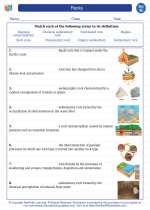Rocks -> black holes
Black Holes
Black holes are mysterious and fascinating objects in the universe. They are regions in space where the gravitational pull is so strong that nothing, not even light, can escape from them. This makes them invisible to the naked eye, and they can only be detected through indirect means, such as the effect they have on nearby stars and gas.
Formation of Black Holes
Black holes are formed when massive stars undergo gravitational collapse at the end of their lifecycle. This collapse occurs when the star has exhausted its nuclear fuel and can no longer support its own mass against gravity. The core of the star then collapses into a singularity, creating a black hole.
Characteristics of Black Holes
Black holes have several key characteristics:
- Event Horizon: This is the boundary around the black hole beyond which nothing can escape. Once an object crosses the event horizon, it is pulled into the black hole and cannot return.
- Singularity: At the center of a black hole lies the singularity, where the mass is concentrated into a single point of infinite density.
- Spacetime Distortion: Black holes distort the fabric of spacetime, causing time to slow down near the event horizon.
- Hawking Radiation: According to Stephen Hawking's theory, black holes can emit a form of radiation and gradually lose mass over time.
Study Guide
Here are some key points to focus on when studying black holes:
- Understand the concept of gravitational collapse and how it leads to the formation of black holes.
- Learn about the event horizon and its significance in relation to black holes.
- Examine the properties of black holes, including their effects on spacetime and the concept of singularity.
- Explore the ongoing research and theories related to black holes, such as Hawking radiation and the quest to understand their role in the universe.
By understanding these concepts and delving into the fascinating world of black holes, you can gain a deeper appreciation for one of the most intriguing phenomena in astrophysics.
.◂Science Worksheets and Study Guides Eighth Grade. Rocks

 Worksheet/Answer key
Worksheet/Answer key
 Worksheet/Answer key
Worksheet/Answer key
 Vocabulary/Answer key
Vocabulary/Answer key
 Vocabulary/Answer key
Vocabulary/Answer key
 Vocabulary/Answer key
Vocabulary/Answer key
